Sisense has made a name for itself as a leading business intelligence (BI) platform, empowering companies to use data to make wise decisions. All businesses have different needs, and looking into Sisense alternatives can reveal possibilities that are more in line with their needs. We’ll examine a few prominent Sisense substitutes in this post, emphasizing their advantages, disadvantages, and possible points of consideration.
Few Best Alternatives Of Sisense
1. Looker:
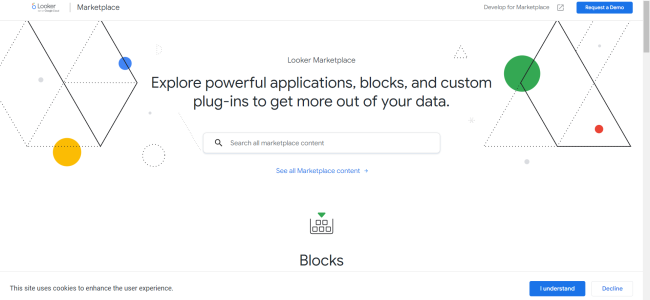
Looker, a capable BI application with an easy-to-use interface and data exploration features, is currently a component of Google Cloud. Users can build and share interactive reports and dashboards using Looker’s web-based platform. Its distinct modeling language, LookML, streamlines the data modeling procedure and facilitates its handling of complicated datasets by non-technical users.
Key Features:
- Data exploration featuring an intuitive user interface.
- LookML-based centralized data modeling.
- Integration with multiple data sources, such as well-known cloud computing platforms.
- Insight sharing and cooperation in real-time.
Think about Looker: You value teamwork and need a platform that works well with the data infrastructure you already have.
2. Tableau:
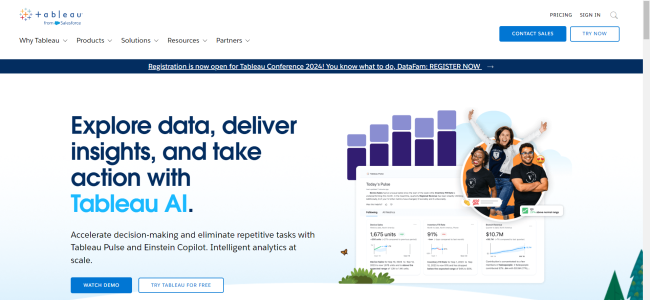
Tableau, a well-known BI and data visualization tool, enables users to build informative and engaging dashboards. Tableau’s drag-and-drop interface makes it easier to visualize large, complicated datasets. Its wide range of connectors integrates seamlessly with many data sources, and its vibrant community adds information and assistance.
Key Features:
- A user-friendly drag-and-drop interface makes creating visualizations simple.
- Sturdy data connectivity from multiple sources.
- The ability to analyze and share data in real-time.
- A vibrant community with plenty of resources.
Think about Tableau: You need a product with a thriving community and connectivity choices, and your company is heavily focused on data visualization.
3. Power BI:

A comprehensive business analytics solution from Microsoft, Power BI enables users to visualize and share findings throughout an organization. Power BI is well-known for its smooth interaction with other Microsoft products and provides a range of data connectors, a user-friendly interface, and data modeling features.
Key Features:
- Coordination with the Microsoft ecosystem is integrated for smooth operation.
- Wide range of data source compatibility and extensive data interfaces.
- Capabilities for advanced analytics, such as AI and machine learning.
- For detailed data modeling, use Power BI Desktop.
If your company already has a lot of investments in the Microsoft ecosystem and you’re looking for a complete BI platform with robust data modeling capabilities, give Power BI some thought.
4. Qlik Sense:

With an emphasis on associative data modeling, Qlik Sense is a potent data visualization and discovery tool. Users can investigate and evaluate data correlations in real time, revealing previously undiscovered insights, an innovative associative engine. A scalable and adaptable platform that works for companies of all sizes.
Key Features:
- Real-time exploration via associative data modeling.
- A drag-and-drop interface makes creating dashboards simple.
- Interactive and collaborative analytics.
- Scalability for big and small firms alike.
When associative data modeling is the technology you need, Qlik Sense is the answer.
5. Domo:
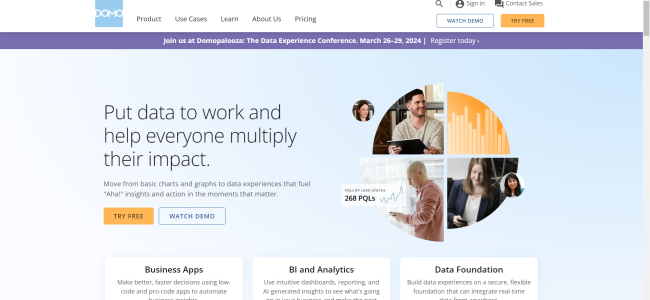
A cloud-based BI platform, Domo, gives a comprehensive picture of your company’s data. Domo’s intuitive interface facilitates connection, visualization, and sharing of insights from multiple data sources. Because of the distinctive card-based architecture, users from many departments can access data and create interactive dashboards.
Key Features:
- A cloud-based platform that facilitates collaboration and easy accessibility.
- A card-based design that makes creating dashboards simple.
- Integration from numerous data sources.
- Integrated collaboration tools for exchanging insights in real-time.
Think about Domo: You require a BI solution that enables collaboration through interactive dashboards with a preference for a cloud-first strategy.
6. Yellowfin BI:

Yellowfin BI is an end-to-end analytics platform that uses a range of reporting and visualization capabilities to provide insights that can be put into practice. Yellowfin, well-known for being user-friendly, provides a scalable solution appropriate for companies of all sizes. It offers a variety of deployment choices, including cloud, hybrid, and on-premises systems.
Key Features:
- Dashboard building with drag-and-drop capabilities.
- Flexible deployment choices combined with a scalable solution.
- Features for collaboration, such as annotation and comments.
- AI-driven analysis that produces automated insights.
If you want AI-driven insights and require a scalable BI platform with deployment choices, give Yellowfin BI some thought.
7. MicroStrategy:

MicroStrategy is an enterprise-grade BI and analytics software that offers a wide range of features. It provides robust tools for reporting, data visualization, and mobile analytics. MicroStrategy is a good fit for large businesses handling massive datasets because of its scalable architecture. With an emphasis on cloud-based solutions, mobile analytics, and business intelligence, MicroStrategy enables users to make data-driven choices throughout the company.
Key Features:
- Robust security features combined with enterprise-grade analytics.
- Mobile analytics for data access while traveling.
- Integration with big data technologies and other data sources.
- Capabilities for machine learning and advanced analytics.
If your company needs a robust, scalable BI platform that prioritizes security and mobile analytics, look at MicroStrategy.
8. SAS Visual Analytics:

The SAS analytics suite includes SAS Visual Analytics, which provides a full range of capabilities: reporting, data visualization, and exploration. SAS Visual Analytics is well-known for its sophisticated analytics features, which let users find patterns, build interactive dashboards, and apply statistical analysis to make well-informed decisions.
Key Features:
- Powerful statistical modeling and analytics tools.
- Sturdy tools for exploring and visualizing data.
- End-to-end solution integration with the SAS analytics ecosystem.
- Fast insights with high-performance in-memory processing.
If your company needs sophisticated analytics capabilities in addition to standard BI features and you are already utilizing the SAS analytics ecosystem, consider SAS Visual Analytics.
9. ThoughtSpot:

ThoughtSpot is a search-driven analytics platform that uses a Google-like search interface to provide corporate customers with access to data. It makes use of artificial intelligence to deliver predictions and insights instantly. ThoughtSpot aims to make data access more accessible to non-technical people so they can benefit from their data without requiring a lot of training.
Key Features:
- Analytics that are search-driven for simple data exploration.
- Natural language processing to create queries.
- Automated data analysis and insights powered by AI.
- Features for collaboration that allow insights to be shared throughout the company.
Think about ThoughtSpot: Your company wants to give business users immediate access to information and emphasizes a search-driven analytics strategy.
10. GoodData:
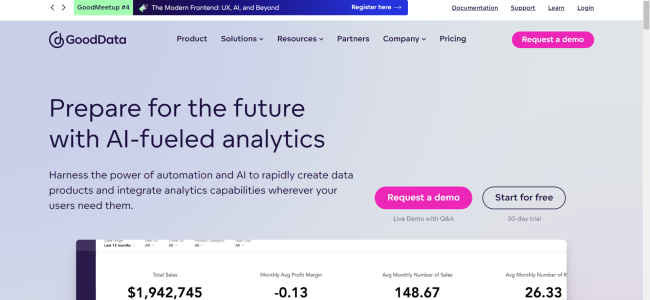
A cloud-based analytics platform called GoodData has a strong emphasis on providing business intelligence and embedded analytics solutions. It is intended for companies who want to incorporate analytics into their workflows, products, or apps. Data governance features offered by GoodData let businesses keep control over their data while facilitating easy user access to insights.
Key Features:
- Integrated analytics for use in workflows and apps.
- Scalable cloud-based architecture.
- Reports and dashboards that can be customized for specialized insights.
- Tools for data governance to guarantee compliance and data security.
Think about GoodData: You want to keep control over data governance and security while integrating analytics into your applications or products.
11. IBM Cognos Analytics:
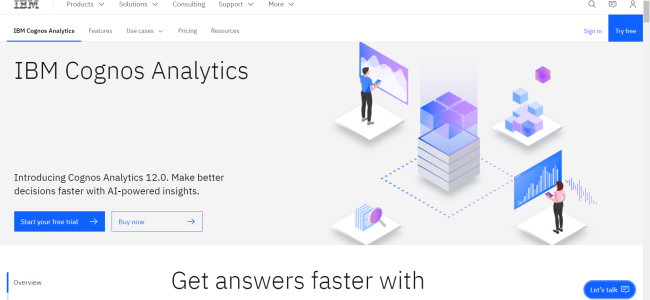
The all-inclusive BI platform IBM Cognos Analytics has several features, such as dashboards, data exploration, and reporting. It is renowned for its capacity to offer self-service analytics and manage intricate data circumstances. With its ability to interface with several data sources, IBM Cognos Analytics gives users a unified picture of their data to help them make better decisions.
Key Features:
- Business users can access self-service analytics.
- Robust dashboard building and reporting features.
- Integration with big data and other different data sources.
- AI-powered insights to improve judgment.
If your company needs a flexible BI platform with cutting-edge features and integration options, especially for situations with complicated datasets, look at IBM Cognos Analytics.
12. TIBCO Spotfire:
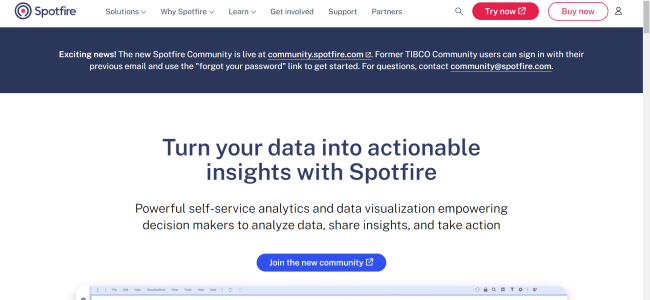
Data visualization and discovery are the main focus areas for the analytics and business intelligence platform TIBCO Spotfire. It provides an easy-to-use interface for building dynamic reports and dashboards. With the help of Spotfire’s advanced analytics features, users may carry out predictive modeling and statistical analysis. The platform is renowned for being user-friendly and able to manage big datasets.
Key Features:
- Efficient instruments for exploring and visualizing data.
- Predictive modeling with advanced analytics.
- Integration with different databases and data sources.
- Features that facilitate teamwork for analytics.
If your company requires strong analytics skills for predictive modeling and your high priority is data exploration and visualization, you should give TIBCO Spotfire some thought.
13. ClicData:
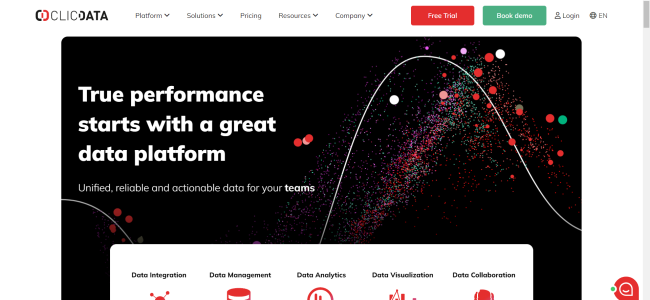
A cloud-based business intelligence platform called ClicData prioritizes usability and simplicity. Because it offers dashboarding, reporting, and data visualization features, individuals with different levels of technical proficiency can utilize it. Users may construct customized dashboards using ClicData’s drag-and-drop interface.
Key Features:
- A cloud-based platform that facilitates cooperation and accessibility.
- A drag-and-drop interface makes creating a dashboard simple.
- Integration with multiple data sources, such as well-known databases.
- Features for cooperation and data exchange.
Consider ClicData: You need a user-friendly BI platform for dashboard creation and sharing, and your organization prioritizes simplicity and ease of use.
Conclusion:
Selecting the best BI solution for your company requires serious thought to your unique needs and goals. You can choose the BI platform that best fits your data analytics strategy by weighing these options against the objectives of your company and the capabilities of your current infrastructure.